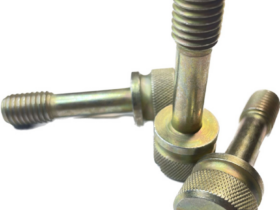Since Soviet times, painting walls in the bathroom was the most common type of decoration. Today, this method of decorating walls is experiencing a new birth — other, other, not so toxic and better colors came to change oil.
Painting the bathroom — which enamel to choose
The video shows painting the ceiling step by step
Before finding out which enamel is best suited for such work, decide in which cases it is used. Its first and most important advantage is cheapness. Therefore, the color of the walls in the bathroom is one of the best options for those who have a limited budget. On the other hand, a huge number of various colors and shades of enamels allows you to create not only plain, but also multi -colored walls and ceilings.
The main condition for the bathroom should be moisture resistant. Alkyd, latex, acrylic and oil enamel have this property. However, oil paint is used less and less. And this is not at all surprising, because such an enamel begins after three to four years, begins to crack and peel off. And white, besides, is noticeably yellow.
The latex enamel Bekerplast 7 Bekers brand has proven a good way. It is intended for rooms with high humidity and forms a matte coating, which, according to the manufacturer, is durable. Water is used as a solvent in it, which means that it almost does not smell. However, no matter how moisture -resistant paint is, it is still better to finish the apron with tiles near the baths and shells. In addition, the key to the durability of the enamel coating will be good ventilation in the room.
As for the choice of color, the general rule acts here — the smaller the room, the lighter the tint of enamel should be. If you want to add brightness walls, then you can make any pattern with the same paint of another shade. You can draw it by hand or apply through a special stencil.
How to prepare walls in the bathroom for painting
The video shows tips on painting the ceiling
The main difficulty that those who choose paint as a decoration are preparing the surface. It should be as flat as possible, otherwise the paint (especially glossy) will make possible flaws more noticeable.
DIY bathroom painting like any finish begins with the removal of the old paint. The main thing is to remove the tile and the remains of tile glue as carefully as possible. You should get rid of oil paint, if the surfaces were once painted with it. If there is no way to remove the whole, then you can make notes on it with an ax.
Then the walls need to be plastered. Use only a moisture -resistant mixture that can withstand higher compared to room temperatures. The same goes for putty and primer. If these materials are selected incorrectly, the chance to last for many years at the painted surface is small.
If painting the ceiling in the bathroom is also included in the repair plan, it also needs to be prepared. Moreover, the walls can only be painted after the ceiling. If everything is done the opposite, then drops of paint falling from above will certainly spoil the freshly painted walls. As a tool when working with the ceiling, it is most convenient to use a roller on a long handle. If the furniture and sanitary span in the bathroom are already placed, they should be covered with plastic film.
The main stage of preparatory work is a primer. The fact is that the paint is an excellent «meadow» for various molds. It is necessary, as they say, from the heart — this will help to stop the growth of mold at the root.
Bathroom — painting begins
After the bathroom for painting is ready, you can start the final stage of work. In the arsenal, the masters must certainly have fur rollers, cuvettes for paint and brush. If the instruction requires that, then you need to dilute the paint. If there are no such instructions on the label, you can immediately start mixing — you can do this manually or using a mixer nozzle.
During the painting work, the humidity of the room should not be high.
After that, a small amount of paint is poured into the cuvette, into which the roller or brush is then dipped, not forgetting to remove its excess. The movements of the roller should be smooth, while tightly pressed it against the wall. To achieve the best effect, the enamel is applied to two layers, not forgetting that the second must be applied only when the first is completely dry. Until the moment when the paint is completely dry, it is worth taking care that the room does not “walk” in the room.
Care for painted ceilings and walls is not composed. As they become contaminated, they can be wiped with a rag or washed with soft detergents. In addition, it is worth remembering that the paint is less than the stand to mechanical influences than the same tile, so you need to handle such a coating quite carefully.













Оставить коммент.